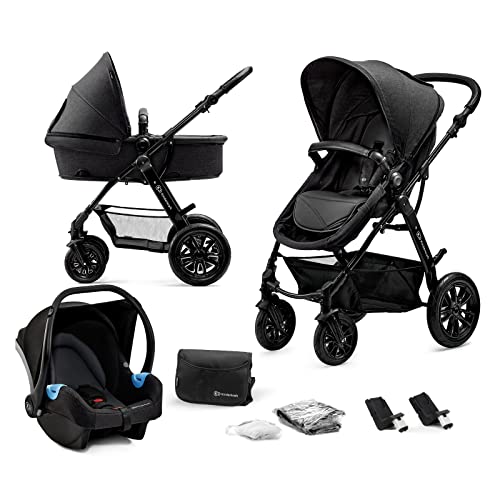Prams and Pushchairs: A Comprehensive Guide for New Parents
Browsing being a parent includes a multitude of decisions, one of the most considerable being the option of an ideal pram or pushchair. These important products serve as a haven for infants and a means of transport for caretakers. Whether walking through the park or running errands, a great pram or pushchair can boost the experience for both moms and dad and kid. This article offers an in-depth appearance at the kinds of prams and pushchairs offered, their functions, and essential factors to consider to make before buying one.
Understanding Prams and Pushchairs
While the terms "pram" and "pushchair" are frequently utilized interchangeably, they refer to slightly different items. Understanding pushchairsandprams can help in making an informed option.
| Term | Description |
|---|---|
| Pram | Normally created for babies, prams have a fully flat structure, permitting the baby to lie down comfortably. They often feature a carrycot and are suitable for newborns as much as about 6 months old. |
| Pushchair | Designed for older babies and young children, pushchairs typically have a more upright seating position. They are versatile and can typically be reclined or gotten used to deal with the kid's development, starting from around six months and reaching preschool age. |
Types of Prams and Pushchairs
When selecting a pram or pushchair, various designs will accommodate different parenting requirements and lifestyles. Here are the main types readily available on the market:
Traditional Prams
- Classic, classic styles with a durable carrycot.
- Ideal for newborns.
- Normally bulkier, ideal for leisurely walks.
Pushchairs
- Light-weight and often foldable, ideal for travel and fast outings.
- Can be front-facing or rear-facing.
- Consist of functions like adjustable handlebars and reclining seats.
Travel Systems
- A mix of a car seat and a pushchair.
- Hassle-free for car-to-pushchair transitions without disrupting the baby.
- Normally more pricey but worth thinking about for their multifunctionality.
Multi-Functional Strollers
- Offer numerous setups, enabling for a carrycot, sit-up seat, or safety seat attachment.
- Adaptable as per the child's growth and changing requirements.
- Can often be used for multiple kids with attachments.
Lightweight Strollers
- Ultra-portable, ideal for moms and dads on the go.
- Easy to fold and carry.
- Typically suggested for older babies or toddlers.
Secret Features to Consider
When choosing the ideal pram or pushchair, a few critical functions need to be taken into account:
Safety Features
- Search for a five-point harness system to secure the kid.
- Models with braking systems that are simple to run with the foot offer included security.
Weight and Size
- Consider how much weight the caregiver can manage, and the storage area readily available.
- A light-weight model might supply easier maneuverability, while a bulkier design may offer better stability and durability.
Resilience and Material
- A frame made from top quality products ensures longevity.
- Weather-resistant materials can offer convenience and ease of cleansing.
Reduce of Folding
- Models that can be folded quickly and quickly are normally favored, especially for moms and dads who require to utilize public transport or have limited storage area.
Handling and Comfort
- Adjustable deals with can accommodate different heights, ensuring a comfortable push for all caretakers.
- Good suspension is necessary for smoother rides on irregular surface areas.
Getting ready for the Purchase
Before buying, it's a good idea to conduct comprehensive research study. The following actions will help new parents make an informed decision:
Define Your Needs
- Consider way of life aspects such as travel frequency, city vs. suburban living, and storage space.
Budgeting
- Prams and pushchairs vary considerably in price. Set a sensible budget, remembering safety and quality.
Test Drive
- Whenever possible, test the pram or pushchair. Take notice of weight, maneuverability, and overall convenience.
Parent and Baby Reviews
- Look for feedback from other parents who have actually utilized the product. This can provide insights into real-world performance.
Examine for Warranty
- A good warranty can protect your financial investment and make sure durability.
FAQs
Q1: At what age can a baby use a pushchair?Typically, babies can
start utilizing a pushchair around 6 months when they can hold their head up independently. Prior to that, a pram or carrycot is recommended. Q2: Are travel systems worth the investment?Yes, travel systems can provide great worth for parents who need a seamless shift between the
car and stroller. They offer convenience and versatility, particularly for households who regularly travel. Q3: How long can you use a pushchair?Most pushchairs can be used till a kid is around 3 to 4 years old, though some designs provide functions for bigger children. Q4: Do I need a brand-new pram or pushchair for each child?If your existing design remains in good condition and satisfies safety requirements, there might be no requirement for a new one. Nevertheless, think about elements like wear and tear, hygiene, and progressing requirements. Choosing the right pram or pushchair is a crucial choice for any new parent. With a range of designs, types, and features readily available, moms and dads can discover a model that matches their requirements, lifestyle, and spending plan.
By investigating and comprehending the differences between prams and pushchairs, parents can make a confident and informed option that will supply the safest, most practical experience for their kid. As they start this exciting journey of parenthood, having the right transportation choice can truly improve the adventure of raising a kid.

